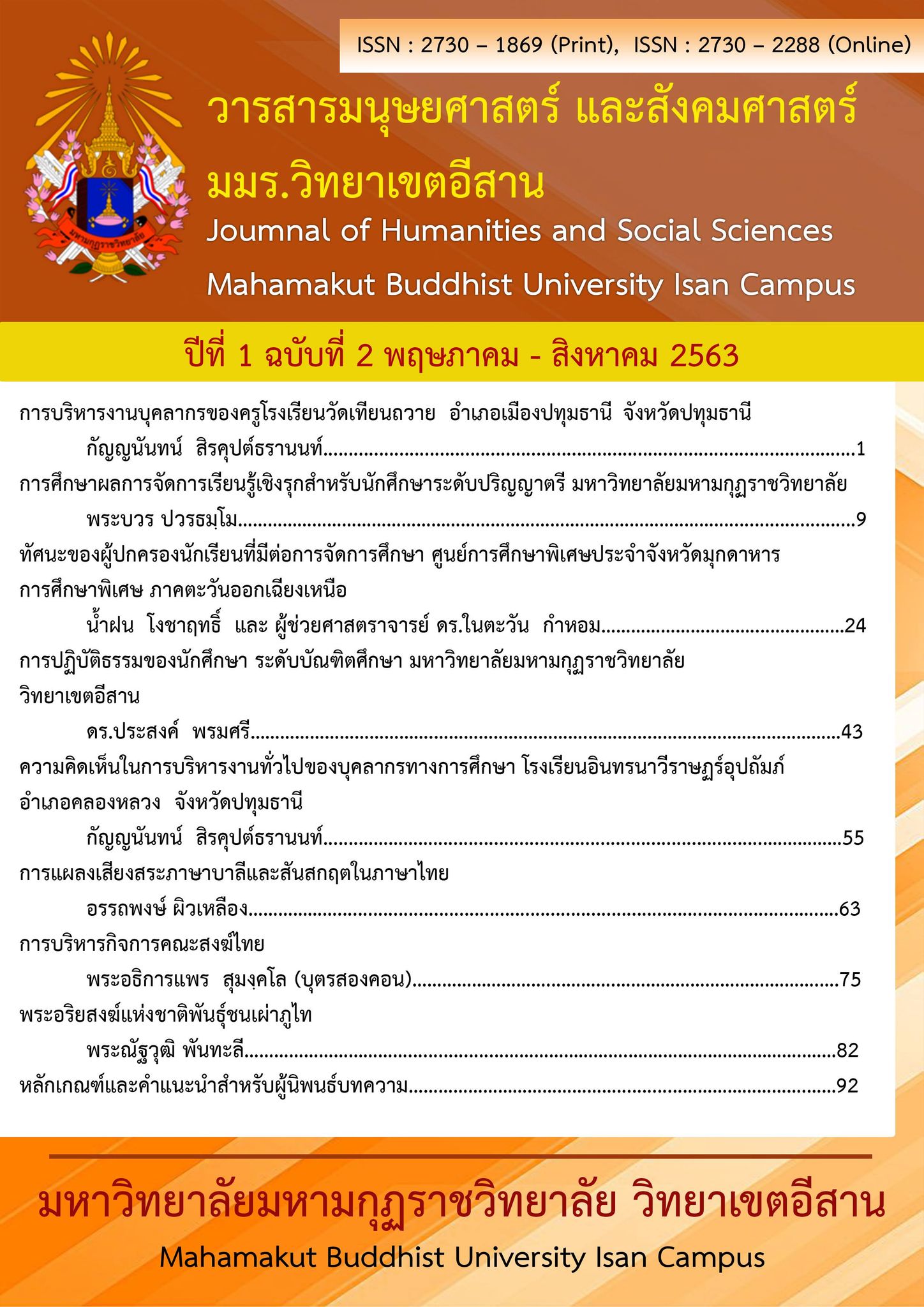A Study results of Proactive learning management on Undergraduate student Mahamakut Buddhist University
Keywords:
Active learning, Undergraduate studentAbstract
A study results of Proactive learning management on Undergraduate student Mahamakut Buddhist University was aimed to examine the effects of active learning on Undergraduate students and to evaluate the characteristics of instructors in the management of active learning. The samples were Undergraduate students in the first semester of academic year 2019, there are 91 students. The research tools included an active learning management plan using the model, cooperative learning model, concept attainment model, inductive teaching and learning model, media organizer instructional model, group discussion, case study, game, problem base learning, and constructivist video instruction in the 15 week, meme to instructors, and a questionnaire with reliability of 0.94.
The result suggested a study results of Proactive learning management on Undergraduate student Mahamakut Buddhist University in overall found that the activities arranged by instructors for students were appropriate at the high level. 1)Students reported the most pronounced effect of activities arranged by instructors was on promoting collaborative learning, followed by practicing class oral presentation, enabling teamwork skills development, promoting active yourself, thinking process skills development. 2) For the characteristics of instructors, students viewed them as appropriate at the highest level, with instructors’ preparedness in teaching, followed by instructors’ knowledge and competency in teaching and instructor cares and suggests to the student in the working.
References
ไพศาล บรรจุสุวรรณ์. (2562). รูปแบบการจัดการเรียนการสอนแบบเชิงรุก (Active Learning) ในการยกระดับความรู้สู่ความเข้าการเมืองและประชาธิปไตยในเชิงเปรียบเทียบ. วารสารอิเล็กทรอนิกส์การเรียนรู้ทางไกลเชิงนวัตกรรม มหาวิทยาลัยสุโขทัยธรรมาธิราช.
ฐมัส มานุวงศ์. (2562). การจัดการเรียนการสอนเชิงรุก เพื่อพัฒนากระบวนการเรียนรู้ของนักเรียนนายร้อยตามแนวคิดการศึกษาเพื่อการพัฒนาที่ยั่งยืน. วารสารวิชาการมนุษยศาสตร์และสังคมศาสตร์ โรงเรียนนายร้อยพระจุลจอมเกล้า ปีที่ 6 (2562).
อรรถพงษ์ ผิวเหลือง. (2562). การพัฒนาการจัดการเรียนรู้เชิงรุกในวิชาหลักภาษาไทย. วารสารการประชุมวิชาการและการนำเสนอผลงานวิจัย ระดับชาติ ครั้งที่ 1 คณะครุศาสตร์ มหาวิทยาลัยราชภัฏสกลนคร.
Bean, J. C. (2011). Engagaing Ideas: The Professor’s Guide to Integrating Writing, Critical Thinking and Active Learning in the Classroom. (2ed.). San Francisco: Jossey-Bass.
Bonwell, C. and Eison, J. (1991). Active Learning: Creating Excitement in the Classroom. ERIC Clearinghouse on Higher Education Washington DC, ERIC Identifier: ED340272.
Sweller, J. (2006). The worked example effect and human cognition: Learning and Instruction. New Jersey: Educational Technilogies.
Morable, L. (2000). Using Active Learning Techniques. Department of Education, the Texas Higher Education Coordinating Board and Richland College.



